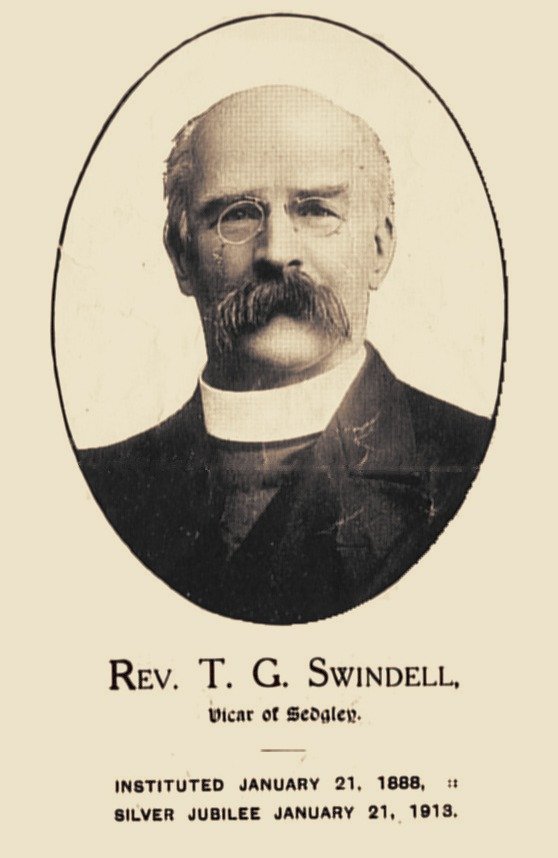|
Cann Lane Chapel, Hurst Hill
|
1798, rebuilt 1864
|
John Wesley(1703-1791) preached here when he visited the area in 1761 and such was the gathering that he spoke from under the facade at the front of the building. This facade was later built on to the front of Mr. Dunton's house, he was Headmaster of Hurst Hill School, he lived in Clifton Street. The first Chapel was built in 1798 but mining subsidence soon made the building unsafe and so it was demolished. The present day building was completed in 1864.
|
|
Fir Street, Gospel End Chapel
|
1846
|
Situated in Fir Street, Gospel End. Was used in the 1930s as a Strict Baptist Chapel by the Caddick family of Clifton Street, Hurst Hill, was originally Wesleyan before the Caddicks.
The chapel was also named on a map dated 1938 as the "Galeed Baptist Chapel." (thanks to Derek Thomas of Penn for this information)
|
|
Coseley, Roseville
|
The first stone was laid 4 October 1852 and the building was opened 17 July 1853.
|
Replaced a nearby earlier Chapel in Mamble Square that was subject to subsidence
Sunday School attendance was 300-400!
Builder T Cox Tipton
Original Trustees:
Thomas Morris Tipton
Thomas Cox Tipton
John Male Tipton
Joseph Stanton Snr Bloomfield
Thomas Meanly Coseley
Thomas Jeavons Mamble Sq. Coseley
Samuel Groucutt Coseley
Daniel Groucutt Coseley
Joseph Baker Wallbrook, Coseley
Edward Hipkins Bloomfield
John Twist Tipton
Joseph Webb West Bromwich
Joseph Dicken Coseley
Elijah Nicklin Bloomfield
Enoch Percival Coseley
1871 to 1881 W Hawkins Snr and John Hickman were stewards.
1880 Chapel keepers house was built
|
|
Ladymoor
|
1848-49, rebuilt ?
|
Date unknown, the foundation stone was stolen! The
first church was built in 1873-4 but it soon became unsafe due to mining
subsidence and water within the foundations. It demolished for safety
reasons. The foundation stone of the new building was dated 7th April
1903, but the first service was held on the 11th June 1903 (an elapsed
time of only 3 months) so dates are suspect or the first service was held
before the church was completed.
|
|
Coseley, Unitarian Church
|
Built in 1717, enlarged in 1740, rebuilt 1875
|
Deeds of the property are dated 28th August 1722.
Coseley Old Meeting Houses originally Presbyterian but eventually became Unitarian. When Joseph Eccleshall was ejected from the Vicargae of Sedgeley (sic) in 1662 (he was deposed due to his refusal to sign the Act of Uniformity), he became the first minister to this congregation, until his death. It is said that so many people attended his funeral service in 1692 that the floor gave way and sank into the cellar- no one seriously injured!
The society met at a house at "Old End" Sedgley, but this was wrecked in the Sacheverell riots (see below) and the new chapel built in 1717, John Peach registered as minister that year. Then merged with the "New Meeting". The chapel was again replaced in 1874.
Notes taken from the preface to the register in the "Non Conformist Registers of the Parish of Sedgeley, including Coseley"
Above information supplied by Wendy Doyle.
1709-10: The Sacheverell controversy. In December 1709, the Tory cleric Henry Sacheverell preached a sermon at St Paul's Cathedral attacking the Revolution Settlement. The Whigs declared the sermon a seditious libel, and the House of Lords impeached him. On March 1, 1710 London was convulsed by extensive rioting as crowds demonstrated in Sacheverell's favour. However, perhaps because of the pressure of the riots, his punishment was relatively mild (he was forbidden to preach for 3 years). Once his penalty had expired, the Queen rewarded him with a rich London living.
(Thanks to Christine Slimm for this information).
|



